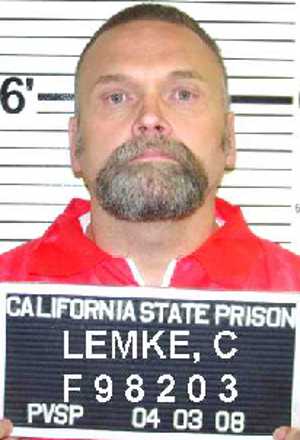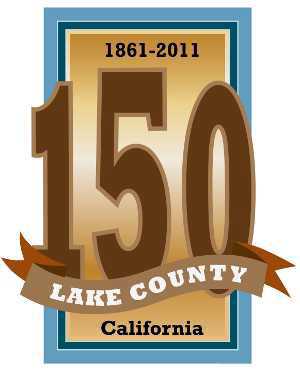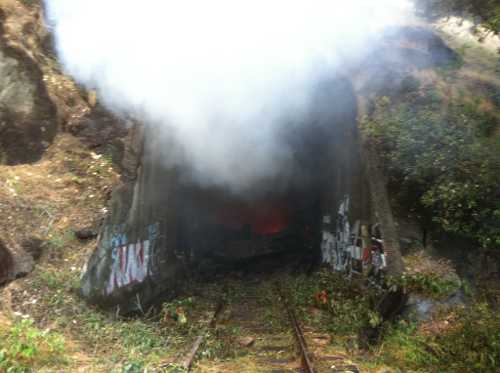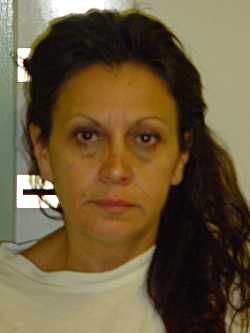
Craig Lemke, 48, was approved for medical parole by the state Board of Parole Hearings on Wednesday, June 15, 2011, under a state law that allows seriously ill offenders to be released. Photo courtesy of the California Department of Corrections and Rehabilitation.
LAKE COUNTY, Calif. – In a first-of-its-kind decision, the Board of Parole Hearings on Wednesday approved the medical parole of a former Lake County man sentenced to 68 years in prison for a third strike case involving the home invasion robbery of an elderly couple.
The Board of Parole Hearings found that 48-year-old Craig Alvin Lemke was not a safety risk due to his “greatly impaired medical condition,” according to California Department of Corrections and Rehabilitation spokesman Luis Patino.
Lemke reportedly suffers from brain tumors, needs feeding and breathing tubes, and requires 24-hour care, making him eligible for release.
Patino said the board has up to 120 days to review Lemke's case and can change or reverse the decision at any time during that period. However, Patino added that the board plans an expedited review of the decision in light of the medical parole hearing's unique circumstances.
Lake County Chief Deputy District Attorney Richard Hinchcliff, who prosecuted Lemke and traveled to Pleasant Valley State Prison near Coalinga on Wednesday to argue against the medical parole, called the situation “a farce.”
Lemke “has left a path of victims his entire life,” and has never shown anyone any compassion, Hinchcliff said.
Hinchcliff also believes the medical parole statute is unconstitutional, as he said it directly contradicts aspects of the voter-approved “three strikes law,” a constitutional amendment meant to increase prison sentences for offenders convicted of multiple, serious felonies.
Nancy Kincaid, spokesperson for the California Prison Health Care Services, said the medical parole cases currently proposed are estimated to save the state's prison system $10 million in the first year, with the care of some inmates costing as much as $1.5 million a year.
She said she could not disclose the particular's of Lemke's case, nor the amount of money his care costs the state, due to privacy requirements.
Lemke was the second California prison inmate to be considered for medical parole but the first to be granted release under the auspices of SB 1399, authored by state Sen. Mark Leno (D-San Francisco).
The bill, which Leno said is meant to save the state prison system millions of dollars in medical care, was passed last year by the state Legislature and signed in September 2010 by then-Gov. Arnold Schwarzenegger.
Leno's bill provides for the medical parole of prisoners who are “permanently medically incapacitated with a medical condition that renders him or her permanently unable to perform activities of basic daily living, and results in the prisoner requiring 24-hour care.”
It requires prisoner release in such circumstances if the Board of Parole Hearings determines that the conditions under which the prisoner would be released would not “reasonably” pose a threat to public safety.
Prisoners sentenced to life without the possibility of parole or who have received death sentences aren't eligible for medical parole under the bill.
A violent history
Lemke, who has a lengthy criminal record going back to the early 1980s, was sentenced by Judge Stephen Hedstrom to 68 years to life in state prison in November 2007 for the February 2006 home invasion robbery of an elderly Lower Lake couple.
According to case records, on the night of Feb. 12, 2006, Lemke and Joe Moncivaiz Jr. went to the home of the elderly couple, who Lemke knew, and got the 90-year-old man to open the door on the pretext that they had run out of gas and needed to borrow some.
The two men, dressed in dark clothing and skeleton masks, then rushed the elderly male victim and threw him to the floor, tying his hands with electrical tape.
The 71-year-old female heard noises, came out of her bedroom, was grabbed and had her wrists and ankles tied with plastic ties, and was told she would be killed if she made any noise, according to case records.
The two men then proceeded to destroy phone lines and ransack the house, taking $2,000, six rifles and a bag with ammunition, although case records noted they left the rifles at the end of the driveway because it was too much to carry.
At a three-and-a-half-week-long trial, Lemke took the stand and denied being at the crime scene. But his denials didn't convince a jury, who convicted him of two counts of first degree home invasion robbery, first degree burglary, three counts of elder abuse, grand theft of firearms, two on-bail enhancements, two strikes and other enhancements, leading to his 68-year sentence and a minimum eligible parole date of July 1, 2071, Hinchcliff said.
Hinchcliff said that Lemke effectively received a life sentence where he would have died in prison if legislators hadn't enacted the medical parole statute.
Lemke's previous criminal history, stretching back to 1981, included cases involving resisting arrest, possession of a sawed off shotgun, drunk in public and driving under the influence, petty theft, methamphetamine sales, burglary, vehicle theft and violation of parole.
In two separate cases from 1990, he was charged with assaulting his 77-year-old grandmother and stealing checks from her to support his heroin habit, with both cases being dismissed for a plea in another case, according to arrest records.
In April 1994 he was sentenced to seven years in prison for robbery and threatening to dissuade a witness in a case that was his first home invasion robbery.
In that case he and an accomplice held a man and his 15-year-old son at gunpoint, tied them up, ransacked their home and threatened to fire bomb the residence if they called police.
Arguing before the state board
Kincaid said the recommendation for medical parole comes from the state's prison doctors who don't have access to an inmate's criminal records and wouldn't therefore know the issues surrounding an inmate's incarceration unless the inmate volunteers it.
She said there's a “very hard wall” between the medical and the custodial sides for a reason. “The medical professionals, you want them focused on delivering medicine,” and not being influenced by concerns about the inmates' records, Kincaid explained.
While the prison doctors make the recommendation based on medical condition, the Department of Corrections and Rehabilitation and Board of Parole Hearings must conduct the safety evaluation, Kincaid said.
Due to federal medical privacy rules and the fact that Lemke hadn't signed a waiver to disclose his medical condition, Hinchcliff said he wasn't given any information by prison officials about Lemke's health issues in order to prepare for the Wednesday hearing.
However, when Hinchcliff arrived to argue against the release on Wednesday, Lemke had signed a waiver which disclosed that, since June 11, 2010, he has been in a hospital outside of the prison, suffering from a variety of health issues that have left him incapacitated and requiring 24-hour care.
During the time Lemke has been hospitalized, two prison guards have been stationed to watch him, at an annual cost of $750,000, said Hinchcliff, who argued before the board that if Lemke was indeed so medically incapacitated he shouldn't have required round-the-clock guards.
Hinchcliff said he understood that the requirement for a minimum of two guards was written into the state prison guards' latest contract with the Gov. Brown. He said the state could have cut costs by eliminating that requirement, but suggested the state won't stand up to the power prison guard union.
Hinchcliff said the hearing lasted two and a half hours, and included him, two Board of Parole Hearings commissioner's and Lemke's attorney.
He said the hearing lasted longer than expected because the commissioners spent a considerable amount of time on the phone with Board of Parole Hearings legal counsel “due to the uniqueness of the hearing and the fact they were wading into new legal waters.”
Hinchcliff gave the commissioners a letter from the daughter of the male robbery victim from February 2006, asking that parole be denied.
“I also argued there were other ways to solve the financial issue that is at the heart of the medical parole statute, without going through the legal formality of granting parole,” Hinchcliff said. “However, there was little that could be done because the release is mandatory under the statute where the inmate meets the designated criteria for release.”
Prison doctors reported that Lemke's prognosis is poor but he could live several more years, said Hinchcliff.
Hinchcliff said Lemke won't come back to Lake County, but is being paroled to the bed where he has been for a year.
“The terms are, if he ever gets better, he goes back into prison,” said Hinchcliff.
Officials can't divulge Lemke's whereabouts because of privacy law. Speaking generally due to privacy requirements, Kincaid said, “Any inmate who is on medical parole, who is in an outside facility, would likely stay in that outside facility.”
She said it depends on the individual, but in some cases, inmates can even be released to family members if it's deemed appropriate.
Hinchcliff disputed the idea that releasing Lemke from prison actually saves taxpayers money, pointing out that now federal Medicare funds, rather than simply state resources, also will be tapped to cover Lemke's care.
“They're not saving the taxpayers a dime because we're just paying out of our left pocket instead of our right pocket,” he said.
Contradicting the three strikes law
Hinchcliff said that the three strikes law sets down requirements that Leno's bill contradicts.
The three strikes law “specifically says that the person has to be sent to prison. There is no alternative,” including county jails, work camps or other facilities, he said.
Leno's bill, which wasn't approved by a two-thirds majority vote of the Legislature and wasn't a voter initiative, is changing that, Hinchcliff said.
The three strikes law also is meant to result in “terms proportionate to the seriousness of the offense with provisions for uniformity of sentences.”
According to Hinchcliff, releasing an inmate 64 years early while others have to serve their full term does not result in uniformity of sentences but rather a term that is extremely disproportionate to the seriousness of the offense, and emasculates the legislatively established purpose of imprisonment, which is punishment.
On Thursday, a day after granting Lemke medical parole, the Board of Parole Hearings held a third medical parole hearing at North Kern State Prison, granting release to inmate Juan Garcia Sandoval, who did not sign a waiver on his condition, requiring the board to discuss his health issues in private, according to a statement issued by Patino.
Patino reported that Sandoval was in prison on a first-degree murder conviction, and had been sentenced to a 27-year term.
E-mail Elizabeth Larson at This email address is being protected from spambots. You need JavaScript enabled to view it. . Follow Lake County News on Twitter at http://twitter.com/LakeCoNews, on Tumblr at www.lakeconews.tumblr.com, on Facebook at http://www.facebook.com/pages/Lake-County-News/143156775604?ref=mf and on YouTube at http://www.youtube.com/user/LakeCoNews .


 How to resolve AdBlock issue?
How to resolve AdBlock issue? 












